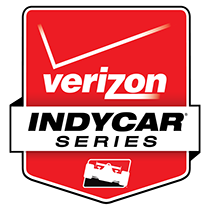
WHAT IS INDYCAR
Featuring racing at a combination of superspeedways, short ovals, road courses and temporary street circuits, the IndyCar Series offers its international lineup of drivers the most diverse challenges in motorsports. The top point scorer is crowned the series champion and receives a $1 million bonus.
Founded in 1994, INDYCAR serves as the sanctioning body for the IndyCar Series. Its first race was the Indy 200 on Jan. 27, 1996, at Walt Disney World Speedway in Lake Buena Vista, Fla. (It was won by Buzz Calkins).
These stars drive single-seat, open-cockpit cars that feature a 2.2-liter, twin turbocharged, direct-injected V-6 engine optimized to run at 12,000 RPM with an estimated 500-700 horsepower depending on the turbocharger boost setting. The consumer-relevant engines, which are supplied by Chevrolet and Honda, utilize E85 fuel.
ABC and NBCSN provide comprehensive live, high-definition television coverage of the IndyCar Series in the United States, while ESPN International oversees race coverage to 212 countries. The TV telecasts are complemented by the IMS Radio Network for each event, which includes Sirius XM Satellite Radio and the American Forces Radio Network.
SPEED
The IndyCar Series races faster and closer than any other form of motorsports.
- 96 races with a margin of victory less than one second.
- The fastest race in IndyCar Series history was in 2003 at California Speedway with an average speed of 207.151 mph.
- There have been eight races with a margin of less than one-tenth of a second between its 1-2-3 finishers.
- Thirty-one tracks and 46 drivers have been involved in the 96 races with a margin of victory less than one second.
IndyCar Series cars reach speeds up to 235 mph at Indianapolis Motor Speedway.
INNOVATION
Leader in research enhanced safety, performance and accuracy.
- Under development by INDYCAR and the University of Nebraska-Lincoln’s Midwest Roadside Safety facility since 1998, the SAFER Barrier was designed to reduce the severity of impacts by race cars, one of the most effective safety measures taken in the racing industry in recent years.
- The Holmatro Safety Team, which travels to every IndyCar Series race, has become a worldwide leader through its protocols and procedures at track, its continued teaching of venue-specific fire/paramedic/wrecker crews and its leadership in FIA.
- IndyCar Series car safety initiatives have included side intrusion panels that go beyond FIA standards; attenuators that lessen G forces in impacts; continued development of car safety, including helmet, seat and head surrounds to lessen G forces in impacts.
- Child-seat manufacturer Dorel utilizes the same technology found in INDYCAR race seats in its child car seats.
- The IndyCar Series utilizes a Timing & Scoring application that monitors lap times of cars to the ten-thousandth of a second, the closest in motorsports.
- The creation of jigs and other devices that support technical inspection procedures to keep cars/drivers safe while meeting and exceeding standards.
TECHNOLOGY
Race-inspired developments that translate to commercial applications.
- Many of the technologies made on the racetrack by Firestone, translate to the tires driven by consumers today.
- Data gathered during crashes from the ear accelerometers worn by all drivers is shared with the commercial automotive industry through conferences and universities, which can lead to safety policy changes for auto manufacturers. NASA and the United States Air Force also use the data in developing helmets, seats and harnesses.
- The direct-injected, twin turbocharged engine formula is comparable to the powerplants being utilized by automakers worldwide as they try to build more fuel efficient vehicles.
- The first rear-view mirror was created for the Indianapolis 500. Other Indianapolis 500 firsts are the use of four-wheel hydraulic brakes in 1921, front-wheel drive in 1924 and all-wheel drive in 1932.
GREEN
In pursuit of a greener planet, the IndyCar Series – along with its teams, partners and tracks – embraces a variety of practices befitting a responsible member of the global community.
- First and only motorsport to embrace ethanol, which burns cleaner, resulting in less pollution released into the environment.
- Firestone Racing has made the switch from traditional lead wheels to the 3M Wheel Weight System, constructed of non-lead composite materials for reduced environmental impact.
- Safety-Kleen is the official environmental service supplier of INDYCAR, providing safe and environmentally-responsible disposal of automotive liquids at both the track and team race shops.
- Tracks such as Sonoma Raceway and Pocono Raceway continue to work to reduce their carbon footprint though efforts such as recycling, water conservation and solar power.
- More than 85 percent of the IndyCar Series’ marketing materials are produced on recycled, partially recovered post-consumer waste materials or paper certified by a third-party environmental auditor.
FOLLOW US
RSS
NEWSLETTER
Subscribe to our RSS feed and read
real-time news about the LBGP
Select the kind of news you are interested in and have it sent to your mailbox
INDYCAR
TUDOR
FORMULA D
INDY LIGHTS
PIRELLI WC
FORMULA E
Tickets
Tickets
Tickets
Tickets
Tickets
Tickets
News
News
News
News
News
News
Teams
Teams
Teams
Teams
Teams
Teams
Long Beach Grad Prix
Copyright 2015 - All rights reserved
Pacific Avenue, 3000, Long Beach, CA 90806
Email at : info@gplb.com
Legal Contacts Media Center
